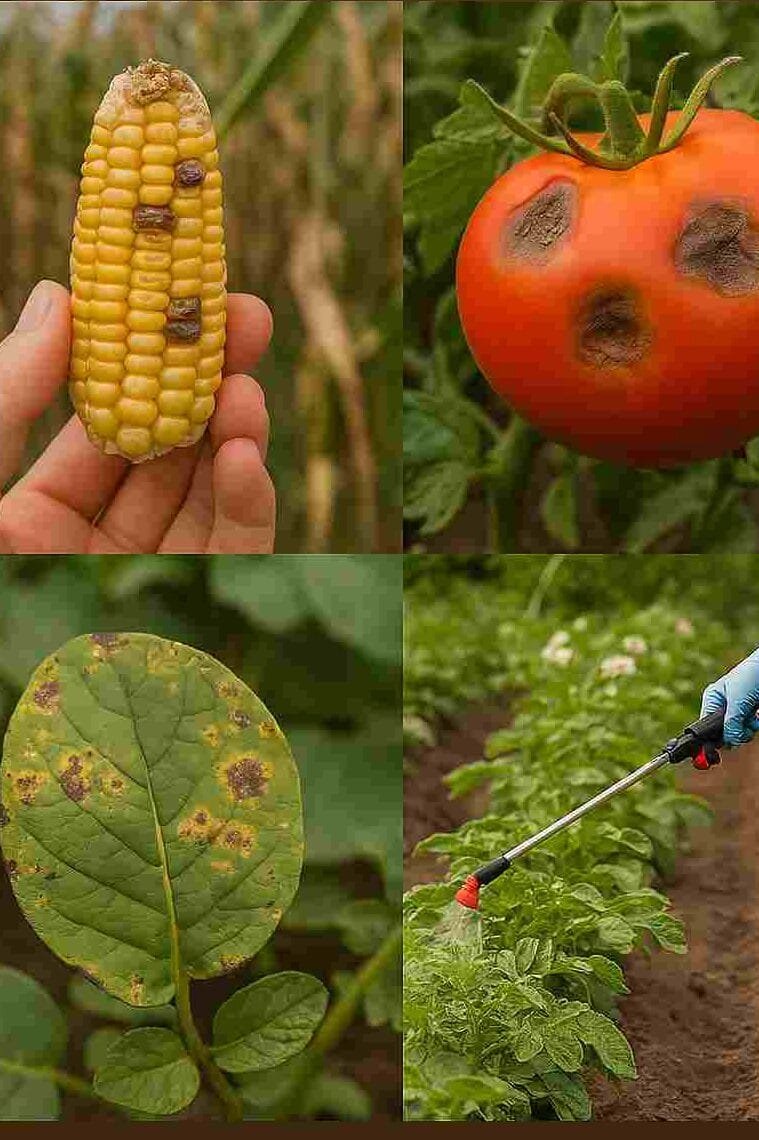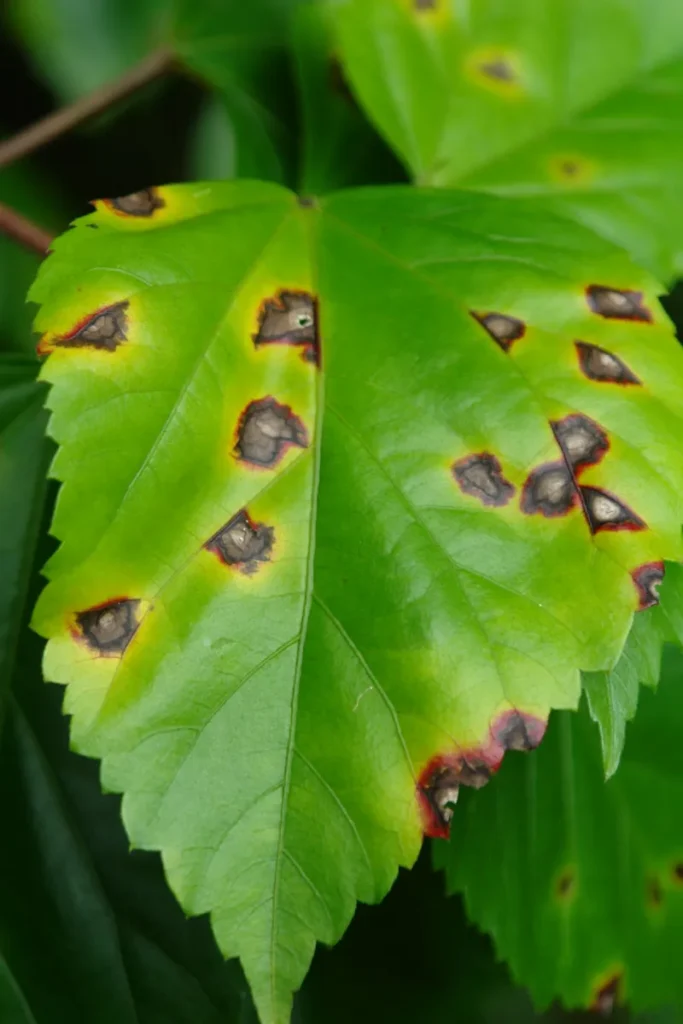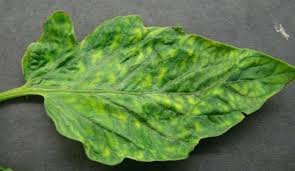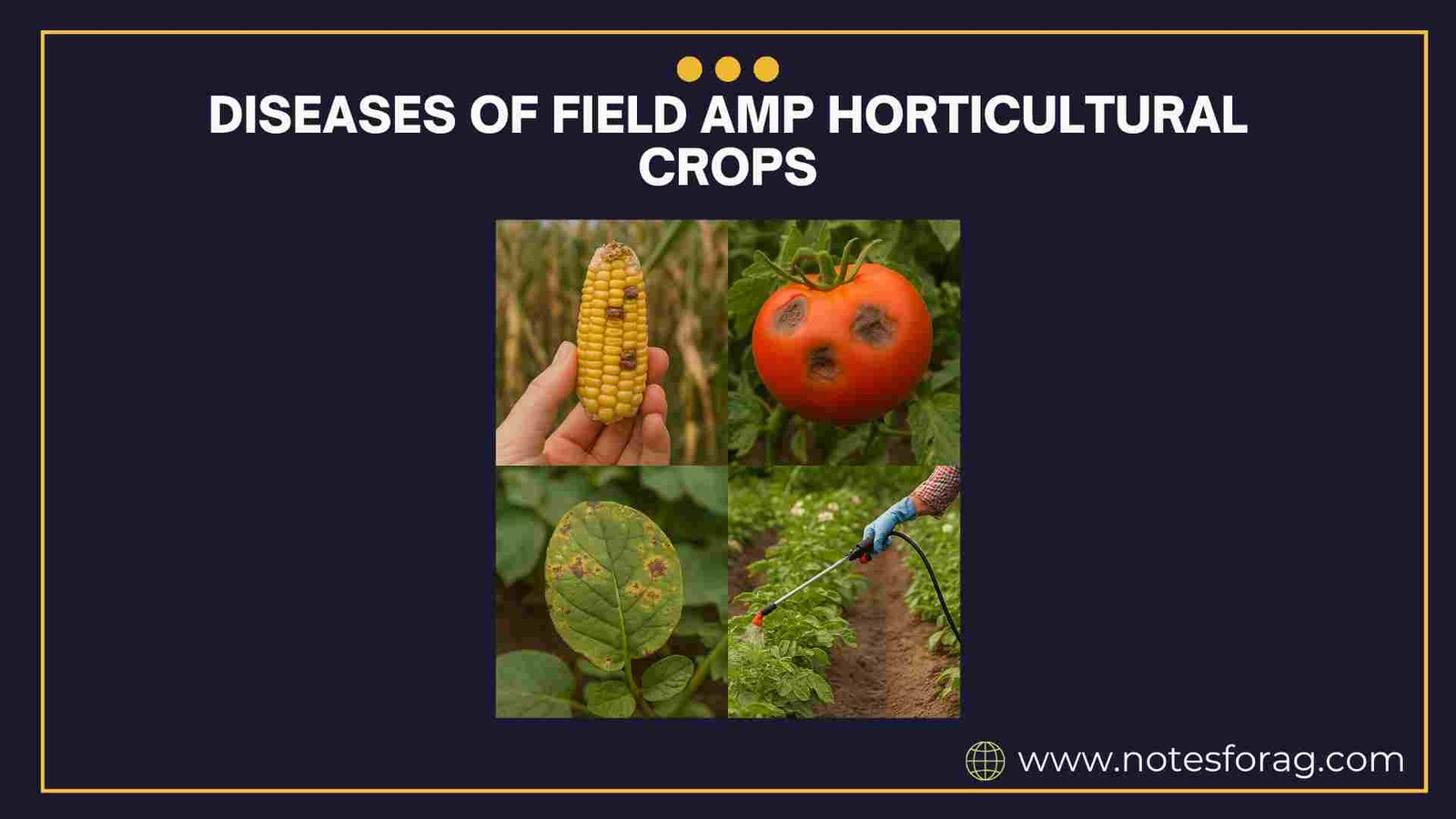Introduction
Diseases are among the most serious threats to field and horticultural crops, leading to significant losses in yield, quality, and profitability. These diseases can be caused by a range of pathogens, including fungi, bacteria, viruses, and nematodes. Effective management strategies are critical to maintaining healthy crops and ensuring sustainable agricultural production. In this comprehensive explanation, we explore the types of diseases, symptoms, examples from key crops, and integrated approaches to disease control.

Summary of Diseases of Field amp Horticultural Crops
- Field and horticultural crops like wheat, rice, vegetables, and fruits are afflicted by a wide range of diseases caused by fungi, bacteria, viruses, and nematodes. These issues can lead to severe yield losses, reduced quality, and economic damage.
- Effective disease control relies on a blend of strategies: resistant varieties, crop rotation, certified seeds, cultural sanitation, biological controls, and judicious use of chemicals. Integrated Disease Management (IDM) is the most sustainable and effective approach.
- Modern practices such as field monitoring, forecasting, and precision application enhance disease response. Ongoing research, farmer training, and supportive policies are vital to building resilient cropping systems against climate and pathogen evolution.
Table of Contents
Types of Crop Diseases
Fungal Diseases
Fungi are among the most common plant pathogens, causing a variety of diseases such as rusts, mildews, blights, and rots. They spread through spores and thrive in warm, moist environments. Some of the most devastating fungal diseases include wheat rust, rice blast, and downy mildew in grapes. These diseases can cause leaf spots, wilting, defoliation, and even plant death if not managed in time.
Bacterial Diseases

Bacterial pathogens enter plants through wounds or natural openings, causing diseases such as bacterial wilt, soft rot, and blight. Unlike fungi, bacteria often ooze from infected tissues and can be spread by rain splash, insects, or contaminated tools. For example, bacterial wilt in tomato and potato can cause rapid wilting and collapse of the plant.
Viral Diseases

Viruses are submicroscopic agents that depend on living cells to multiply. They are often spread by insect vectors like aphids, whiteflies, or leafhoppers. Viral diseases cause symptoms such as mosaic patterns on leaves, leaf curling, stunted growth, and reduced fruit production. In crops like papaya, banana, and tomato, viral infections can be devastating.
Nematode Infestations
Nematodes are microscopic, worm-like organisms that live in the soil and attack plant roots. Root-knot nematodes are particularly harmful, causing galls or knots on roots, which interfere with water and nutrient uptake. Affected plants show symptoms like yellowing, stunted growth, and poor yield. Nematode infestations often go unnoticed until significant damage has occurred.
Major Diseases in Field Crops
Wheat: Rusts and Smuts
Wheat is vulnerable to three main types of rust: stem rust, leaf rust, and stripe rust. These fungal diseases reduce photosynthesis and grain quality. Smuts, like loose smut, replace grains with fungal spores, reducing yield drastically. Resistant varieties and timely fungicide application are key management strategies.
Rice: Blast and Bacterial Leaf Blight
Rice blast, caused by the fungus Magnaporthe oryzae, leads to spindle-shaped lesions on leaves and can affect the neck and panicle, reducing grain filling. Bacterial leaf blight, caused by Xanthomonas oryzae, leads to wilting and drying of leaf tips. Proper water management and resistant varieties help control these diseases.
Maize: Downy Mildew and Turcicum Leaf Blight
Downy mildew causes leaf shredding and systemic infection, while Turcicum leaf blight presents as elongated lesions. Both reduce photosynthetic activity and kernel development. Crop rotation and seed treatment are effective control measures.
Pulses: Wilt and Powdery Mildew
Wilt in chickpea and pigeon pea, caused by Fusarium species, leads to yellowing and drying of leaves. Powdery mildew appears as white, powdery growth on leaves and pods, affecting respiration and grain filling. Timely fungicide use and sanitation are critical.
Oilseeds: Alternaria Blight and White Rust
Alternaria blight in mustard causes circular dark spots with concentric rings, while white rust leads to pustules on the underside of leaves. These reduce oil content and seed viability. Integrated pest management (IPM) strategies including resistant varieties, crop rotation, and fungicides are recommended.
Major Diseases in Horticultural Crops
Vegetables: Damping-off, Late Blight, and Mosaic Virus
Damping-off affects seedlings of crops like tomato, brinjal, and cabbage, causing stem rot at the soil line. Late blight in tomato and potato leads to dark lesions and rapid defoliation. Mosaic virus results in mottled leaves and deformed fruits. Nursery hygiene and vector control are essential.
Fruits: Anthracnose, Citrus Canker, and Banana Bunchy Top Virus
Anthracnose causes black spots on mango, guava, and papaya, affecting marketability. Citrus canker causes raised lesions on leaves and fruits, leading to premature fruit drop. Banana bunchy top virus results in stunted plants and tight leaf clusters. Use of certified planting materials and field sanitation are effective strategies.
Spices and Plantation Crops: Leaf Spot, Quick Wilt, and Yellow Disease
Black pepper suffers from leaf spot and quick wilt caused by Phytophthora fungi. In coconut, yellow disease caused by phytoplasmas leads to leaf yellowing and reduced nut production. Shade management and soil treatment help control these diseases.
Disease Management Strategies for Horticultural crops amp
The Disease Management Strategies for Horticultural crops amp,
Cultural Methods
Crop rotation, use of clean planting materials, proper spacing, and field hygiene reduce pathogen buildup and prevent spread. These practices are cost-effective and environmentally friendly.
Biological Control
Beneficial microorganisms like Trichoderma spp. and Pseudomonas fluorescens suppress disease-causing pathogens. These bio-agents enhance plant immunity and are safe for the environment.
Chemical Control
Fungicides, bactericides, and nematicides are commonly used for disease control. While effective, their indiscriminate use can lead to resistance and environmental harm. Always follow label recommendations and safety precautions.
Resistant Varieties
Developing and using disease-resistant crop varieties is one of the most sustainable approaches. These varieties withstand infection better and reduce reliance on chemical controls.
Integrated Disease Management (IDM)
IDM combines cultural, biological, chemical, and mechanical methods for effective and sustainable disease control. Monitoring disease symptoms, forecasting outbreaks, and applying timely interventions are key components.
Conclusion
Diseases in field and horticultural crops pose a major threat to global food and nutritional security. Understanding the types, causes, and symptoms of these diseases allows farmers to make informed decisions. Implementing integrated management strategies ensures long-term crop health, economic viability, and environmental safety. As climate change and evolving pathogens continue to challenge agriculture, ongoing research, farmer education, and policy support are essential to build resilient cropping systems.
Frequently Asked Questions (FAQs)
What are effective viral disease controls in field crops?
Viral infections like tungro in rice or mosaic in vegetables can be controlled by planting virus-resistant varieties, managing insect vectors, sanitation, and removing infected plants early .
What are the most common fungal diseases in key crops?
Fungal diseases include rusts, blights, mildews, and leaf spots. Examples include wheat rust, rice blast, corn grey leaf spot, and tomato early blight each capable of causing significant crop damage if not managed properly.
What do you mean by horticultural crops?
Horticultural crops are high-value plants grown for food, medicine, or aesthetics, including fruits, vegetables, flowers, spices, plantation, and medicinal plants.
Related Articles

